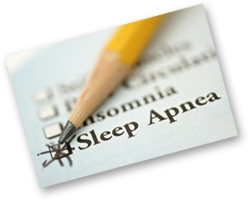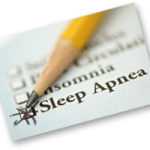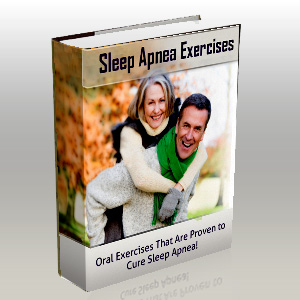Treat Sleep Apnea The Natural Way
What is it? What can be done about obstructive sleep apnea in adults and children? Can you die from it? Sleep Apnea is a chronic medical condition where the affected individual stops breathing several times during sleep causing the oxygen levels in the blood to drop.
Some of its symptoms include;
- Waking up with a dry/sore throat,
- Snoring,
- Restless sleep,
- Drowsiness and lack of energy during the day,
- Choking or gasping for air during the night.
- Feeling of gagging while sleeping
- Morning headache
- Memory loss
- Low mood/depression
- Impotence and lack of sex drive
Sleep apnea is a highly distressing disorder for the sufferer and people living alongside them. To be diagnosed the sufferer must have these pauses in breathing at least 5 times in one hour for 10 seconds or more.
Can you die from it?
In a study of patients who died suddenly who had had recent sleep studies performed, it was shown that almost half of the patients with sleep apnea died between the hours of midnight to 6 a.m., compared with 21% without sleep apnea. It is possible that these individuals died suddenly during periods of apnea. Recent studies show sleep apnea may increase the risk of sudden cardiac death. You can read about one such study here, However, these people may have had other medical complications.
Sleep apnea treatments and solutions
• Nasal decongestants
It can be a nasal dilator, breathing strip, saline spray or a neti pot all of these can be used to keep your nasal passages open. Nasal decongestants are only effective in mild sleep apnea and snoring.
• Positive Airway Pressure Items (Devices)
They are used with a number of breathing mask. The mask should securely fit over your nose or over both your mouth and nose. It should be a bit tight so as not to move out of place when you turn in bed because then it won’t work. It supplies pressurized air-flow
continuously into the throat of the wearer enabling more air to get into the airway. This ensures the airway does not collapse causing you to wake up to catch a breath. It can be used for both mild and severe apnea. The flexible air tubes from the machines allow the pressurized air to be supplied. Among the commonly known machines is the continuous positive airway (CPAP), variable positive air-way pressure (VPAP) and bi-level positive airway (BiPAP). Studies on the effect of these airway devices indicate that they are very effective on OSA patients that use them regularly.
• Positional therapy
Certain people experience sleep apnea when they sleep in certain positions especially sleeping on the back. These people are advised to try different sleeping positions and see which one allows them to breathe properly when sleeping. It only works for those with mild
sleep apnea those with a severe condition it doesn’t change a thing irrespective of what position you sleep in.
• Mouth guards
They are specifically designed to allow more air into the airways. They are worn on the mouth while sleeping they work by pulling the lower jaw a bit forward from its normal position. This slight change is responsible for letting more air to your passages thus letting you breath properly.
• Surgery for children
Research shows most children with sleep apnea have bigger tonsils and adenoids or both. Surgical procedure that removes these two has shown 75% of children with the condition cured. The AAP (American Academy of Pediatrics) recommends this as the best first cause of action when kids exhibit sleep apnea condition.
• Surgery for adults
Unfortunately this is not as straight forward as in chidren.It is effective for treating snoring but not as effective in treating OSA. The challenge faced by surgeons is they cannot pinpoint exactly where the problem is in the numerous sites of the airway. Since the part obstructing the airways cannot be identified by conventional sleep testing surgery may not stop the condition. Given the several places in the airway that obstruction could occur various types of operations have been invented to try to eliminate sleep apnea. One of
these is uvulopalatopharyngoplasty, or UPPP Nasal surgery it has a success rate of over 50% which makes it worth trying. Some surgeons have also reported success by trying multiple stages surgery this where they deal with every part of the airway that may have
obstructions. They advise it is important once you’ve had the surgery to come for routine assessment so that your progress can be accessed. Your physician and surgeon will advise you on what is the best surgery to have it can be one of these; tracheostomy, lower jaw advancement, tongue base reduction, tongue advancement, hyoid advancement or soft palate implants.
Lifestyle changes that may help with sleep apnea treatment and solution.
1. Quit smoking
Smoking is thought to enhance the condition by increasing inflammation and fluid rentation in your upper airway and throat.
2. Abstain from alcohol, sleeping pills and sedatives
They are believed to relax throat muscles thus interfering with the breathing process especially when taken before bed.
3. Keep regular sleeping hours
Maintaining regular sleep helps you relax and sleep better thus decreasing episodes of sleep apnea.
4. Avoid caffeine and heavy meals
This two prevent you from sleeping on time and do not allow you to have a good night sleep since your body is forced to work overtime.
5. Lose some weight if you are obese /overweight. This cannot be overstated enough!
It is believed these people have extra tissue at the back of their throat that blocks the airway and block flow of air in the lungs while you sleep. Reducing a bit of weight may reduce episodes of sleep apnea and losing all the excess weight may totally cure sleep apnea.
Ignoring sleep apnea is dangerous since it can result to even greater health risks among them; it increases the risk of high blood pressure, heart attack, stroke, obesity and diabetes, it makes arrhythmias or irregular heartbeats common, it can lead to an accident while driving or operating machinery since your concentration is low. Seek a physician help if you exhibit any symptoms to get sleep apnea treatment and solutions.
Are there alternatives to the CPAP?
Yes!
Acupuncture:
Some studies suggest acupunctures anti-inflammatory and serotonergic ( enhances the effects of serotonin in the central nervous system) may help, but it should be approached as a complimentary treatment in anything but mild cases, rather than a stand-alone treatment.
Dental Appliance
A Mandibular Repositioning Appliance looks like a mouth-guard and can be used as an alternative to surgery. They move the tongue or lower jaw forward opening the airway. This is not suitable for severe cases but makes a good natural alternative to surgery for those with mild to moderate Apnea.
Provent
One of the newest and most promising option available. The nasal EPAP (expiratory positive airway pressure) device does away with the bulky CPAP . The Provent is a small patch with 2 plugs that fit into the nostrils. A valve opens when you inhale, but closes on exhalation so that air is forced out of a small channel; this causes slight back pressure which keeps the airway open. The Provent is for mild to severe cases and is proving very successful. They cost approx $2 per night. You can find them here Provent. Unfortunately they are not yet available in the UK




